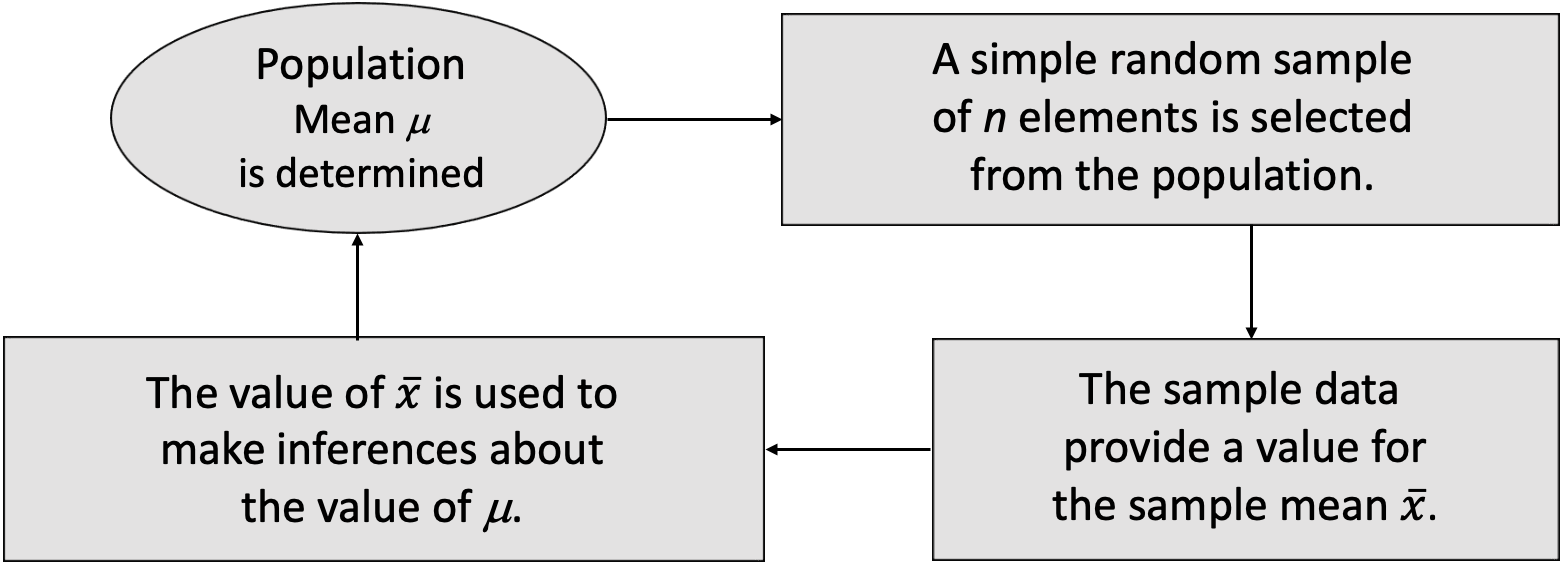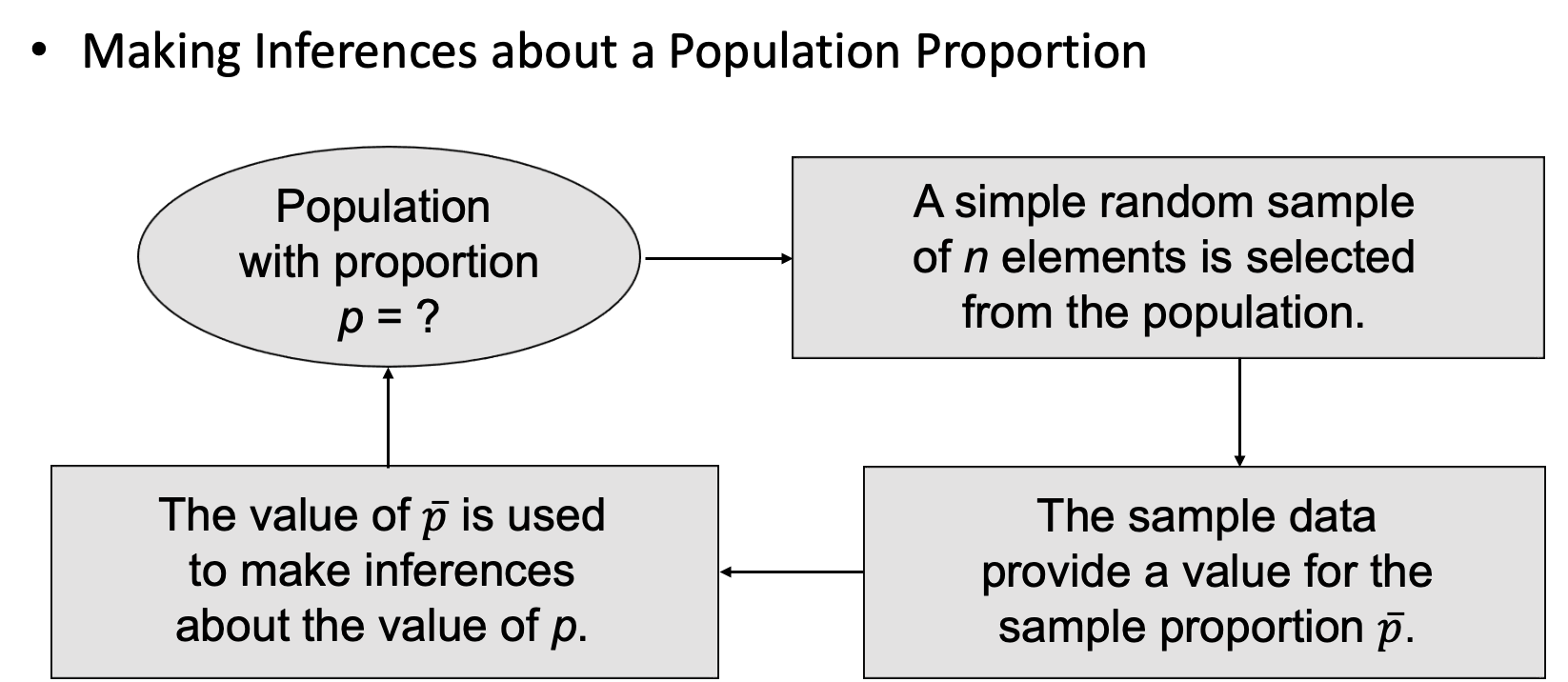Ch 7 - Sampling and Sampling Distributions
1/29
There's no tags or description
Looks like no tags are added yet.
Name | Mastery | Learn | Test | Matching | Spaced |
|---|
No study sessions yet.
30 Terms
Element
Entity on which data are collected
Population
is a collection of all the elements of interest
Sample
The subset of the population
Sampled population
The population from which the sample is drawn
Frame
A list of the elements that the sample will be selected from
Why do we select samples?
Answer research question about a population
Sample results provide only estimates of the value of the population characteristics
Sample contains only a portion of the population
Proper sampling methods
The sample results can provide “good” estimates of the population characteristics
Selecting a Sample
Sampling from a Finite Population
Sampling form an Infinite population
Sampling from a Finite Population
Finite populations are often defined by lists such as:
Organization membership roster
Credit card account numbers
Inventory product numbers
A simple random sample of size n from a finite population of size N is a sample selected such that each possible sample of size n has the same probability of being selected
Sampling w/ Replacement & Sampling w/out Replacement
Replacing each sampled element before selecting subsequent elements is called sampling with replacement. An element can appear in the sample more than once
Sampling without replacement is the procedure used most often
In large sampling projects, computer-generated random numbers are often used to automate the sample selection process
Sampling from an infinite
Sometimes we want to select a sample, but find that it is not possible to obtain a list of all elements in the population
Cannot construct. frame for the population
Hence we cannot use the random number selection procedure
Most often this situation occurs in the case of infinite population
Sampling from an Infinite Population
Populations are often generated by an ongoing process where there is no upper limit on the number of units that can be generated
Some examples of on-going processes with infinite populations are:
Parts being manufactured on a production line
Transactions occurring at a bank
Telephone calls arriving at a technical help desk
Customers entering a store
Sampling from a finite Population
Sampling for an Infinite Population
Sampling from an Infinite Population
Must select a random sample in order to make valid statistical inferences about the population from which the sample is taken
A random sample from an infinite population is a sample selected such that the following conditions are satisfied
Each element selected comes from the population of interest.
Each element is selected independently
Point estimation
A form of statistical inference
We use the data from the sample to compute a value of a sample statistic that servs as an estimate of a population paramente
We refer to x bar as the point estimator of the population mean
s is the point estimator of the population standard deviation
p hat is the point estimator of the population proportion p
p hat = x/n
sample
p = x/N
population
Target population
The poopulatin we want to make inferences about
Sample population
The population from which the sample is actually taken
Whenever a sample is used to make inferences about a population, we should make sure that the targeted population and the sampled population are in close agreement
Sampling distributoin of x-bar

Sampling Distribution of x ̅

•The sampling distribution of x ̅ is the probability distribution of all possible values of the sample mean x ̅.
•Expected Value of x ̅
•When the expected value of the point estimator equals the population parameter, we say the point estimator is unbiased.

Sampling Distribution of x ̅

•When the population has a normal distribution, the sampling distribution of x ̅ is normally distributed for any sample size.
•In most applications, the sampling distribution of x ̅ can be approximated by a normal distribution whenever the sample is size 30 or more.
In cases where the population is highly skewed or outliers are present, samples of size 50 may be needed
•The sampling distribution of x ̅ can be used to provide probability information about how close the sample mean x ̅ is to the population mean m .
Central Limit Theorem
•When the population from which we are selecting a random sample does not have a normal distribution, the central limit theorem is helpful in identifying the shape of the sampling distribution of x ̅.

Relationship Between the Sample Size and the Distribution of X Bar

Example: St. Andrew’s College

Sampling Distribution of P hat (Population proportion)
•The sampling distribution of p ̅ is the probability distribution of all possible values of the sample proportion p ̅.


Stratified Random Sampling
The population is first divided into groups of elements called strata
Each element in the population belongs to one and only one stratum
Best results are obtained when the elements within each straum are as much alike as possible (i.e. a homogenous group)
•A simple random sample is taken from each stratum.
•Formulas are available for combining the stratum sample results into one population parameter estimate.
•Advantage: If strata are homogeneous, this method provides results that is as “precise” as simple random sampling but with a smaller total sample size.
Example: The basis for forming the strata might be department, location, age, industry type, and so on
Cluster Sampling
•The population is first divided into separate groups of elements called clusters.
•Ideally, each cluster is a representative small-scale version of the population (i.e. heterogeneous group).
A simple random sample of the clusters is then taken
•All elements within each sampled (chosen) cluster form the sample.
•Example: A primary application is area sampling, where clusters are city blocks or other well-defined areas.
•Advantage: The close proximity of elements can be cost effective (i.e. many sample observations can be obtained in a short time).
Disadvantage: This method generally requires a larger total sample size than simple or stratified random sampling

Systematic sampling
If a sample size of n is desired from a population containing N elements, we might sample one element for every N/n elements in the population
•We randomly select one of the first N/n elements from the population list.
•We then select every N/nth element that follows in the population list.
•This method has the properties of a simple random sample, especially if the list of the population elements is a random ordering.
•Advantage: The sample usually will be easier to identify than it would be if simple random sampling were used.
•Example: Selecting every 100th listing in a telephone book after the first randomly selected listing.

Convenience Sampling
It is a nonprobability sampling technique. Items are included in the sample without known probabilities of being selected
The sample is identified primarily by convenience
Example: A professor conducting research might use student volunteers to constitute a sample
Advantage: Sample selection and data collection are relatively easy
•Disadvantage: It is impossible to determine how representative of the population the sample is.

Judgement Sampling
•The person most knowledgeable on the subject of the study selects elements of the population that he or she feels are most representative of the population.
•It is a nonprobability sampling technique.
•Example: A reporter might sample three or four senators, judging them as reflecting the general opinion of the senate.
Advantage: It is a relatively easy way of selecting a sample
Disadvantage: The quality of the sample results depends on the judgment of the person selecting the sample

Recommendation
